Tea at Hwaom-sa 2009
Hwaom-sa lies among thick woodlands on the western slopes of Jiri-san
near Gurye-gu. It is one of the first places where tea was planted in
Korea. The tea growing around the temple is unique in being
completely wild, there are none of the extensive, open-field tea
plantations found further east in Hwagye or Hadong. Instead, the tea
bushes are sheltered by bamboo and other trees, from the leaves of
which rain and dew flow down to the tea leaves. Tradionally this was
termed juk-no-cha 竹露茶 (bamboo-dew tea), the highest quality.

The Venerable Dokche has cleared away some of the bamboos in order to give the tea bushes room to grow
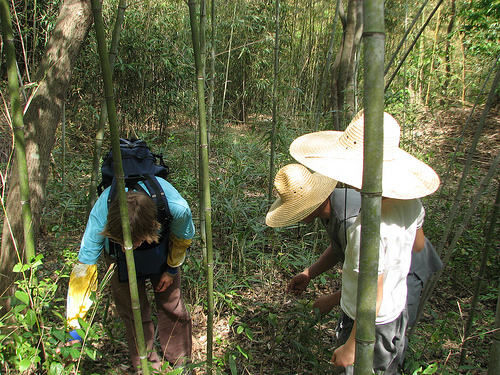
The tip (bud with 2 fresh leaves) must be plucked lightly from the bush, not nipped off.
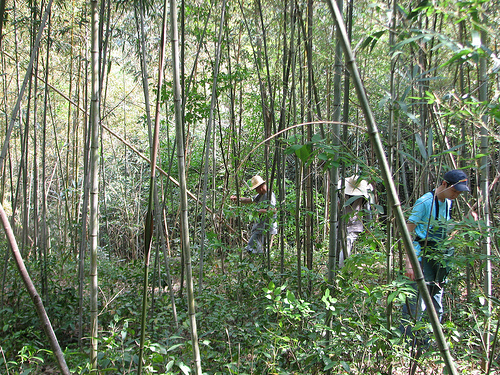
It takes time to find the fresh shoots
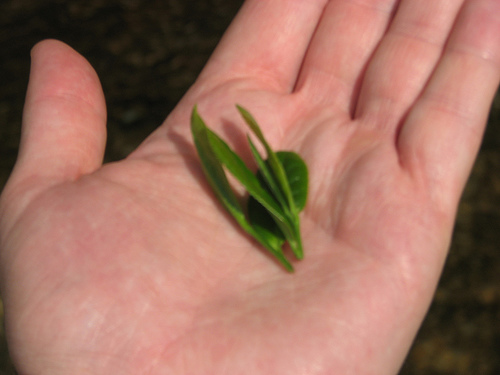
If possible, the complete shoot should remain whole.
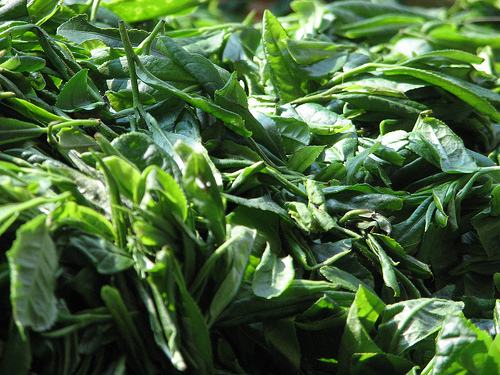
Not all the tips are so small, but all must be fresh, with no hard stalks or old leaves

One kilogram of leaves usually produces about 100 grams of dried tea.
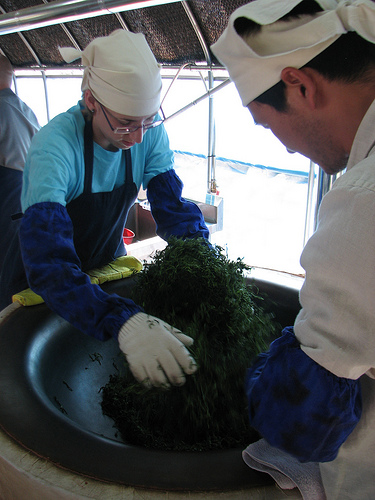
The first drying is done in a cauldron at 350 degrees, really hot. 4 layers of gloves are worn

The tea soon becomes very fragrant

The rolling is even more difficult than the drying, and it takes
experience as well as energy to make the leaves curl on themselves.

Then the sticky leaves must be separated to avoid having tangled clumps in the dried tea
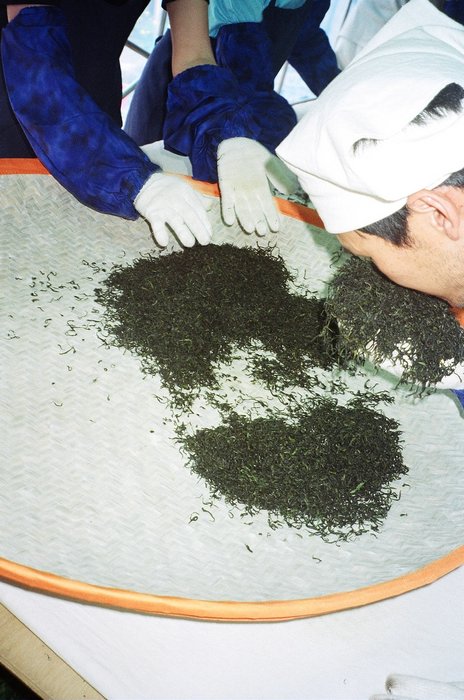
Above all the leaves must not scorch
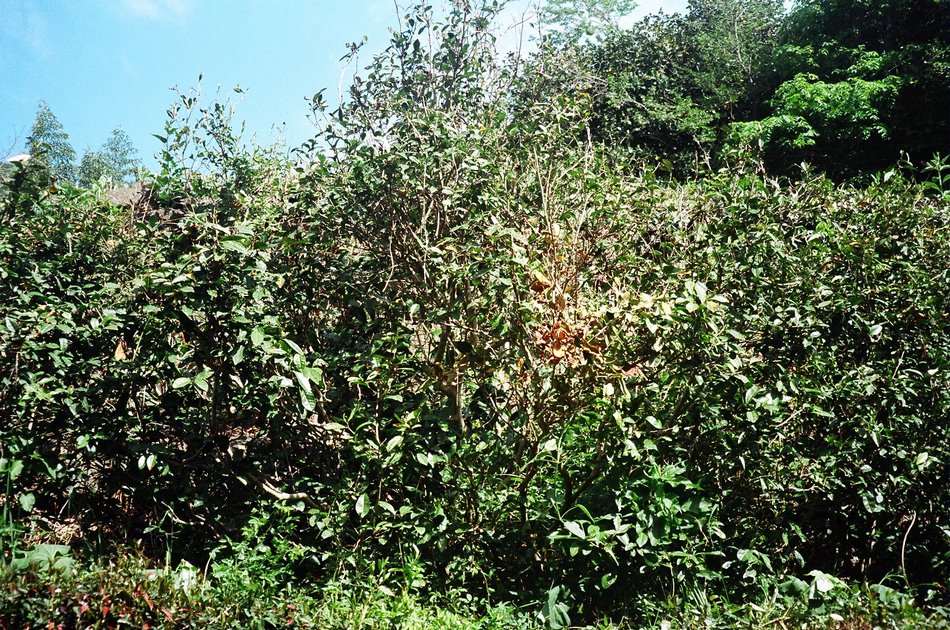
Just behind the Hall of Gucheung-am, these tea trees are several
centuries old, with thick trunks. They have recently been deprived of
bamboo shelter, for fear of fires, and are suffering from the drought.
Snakes seem happy to frequent their roots.











